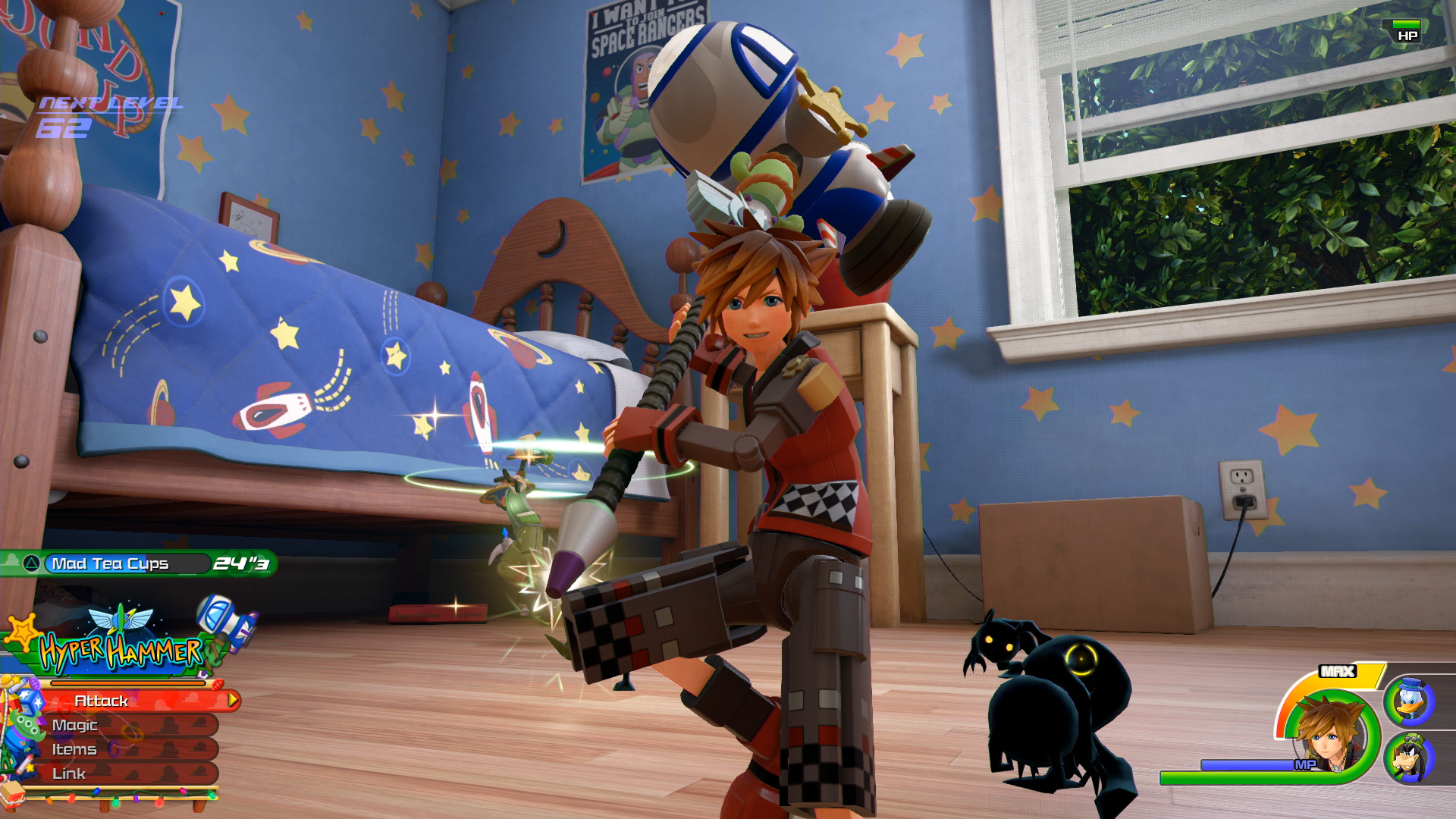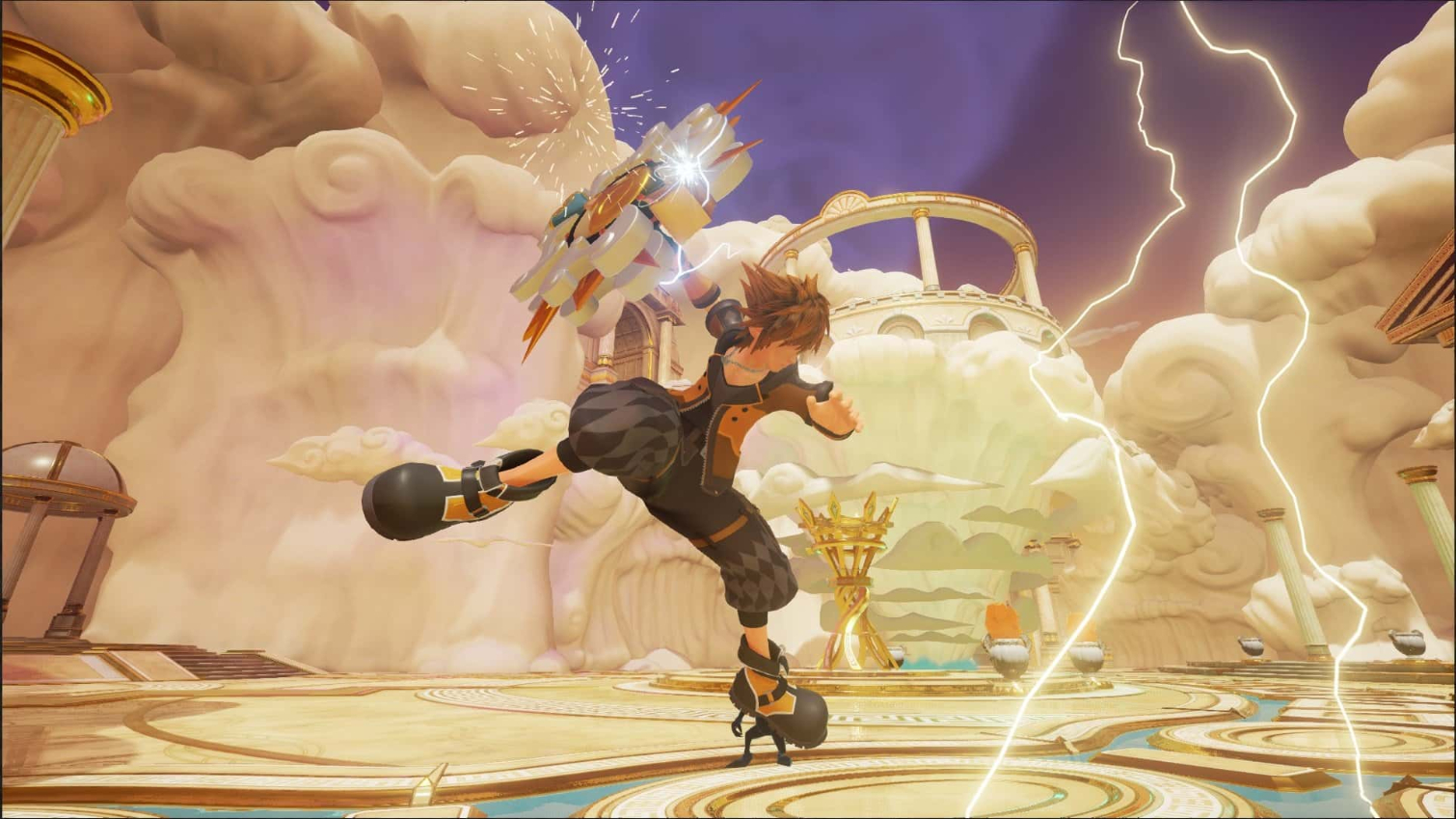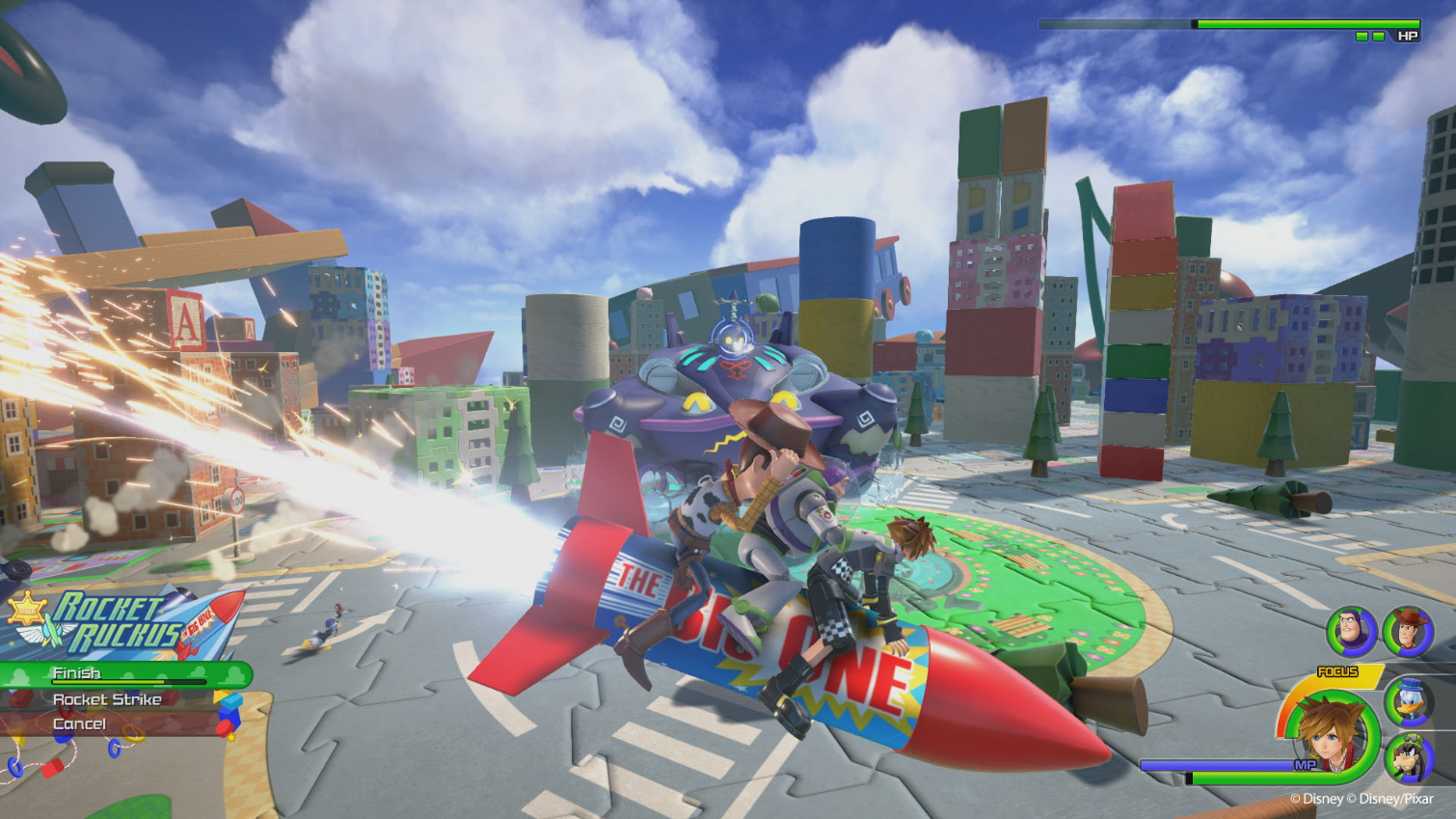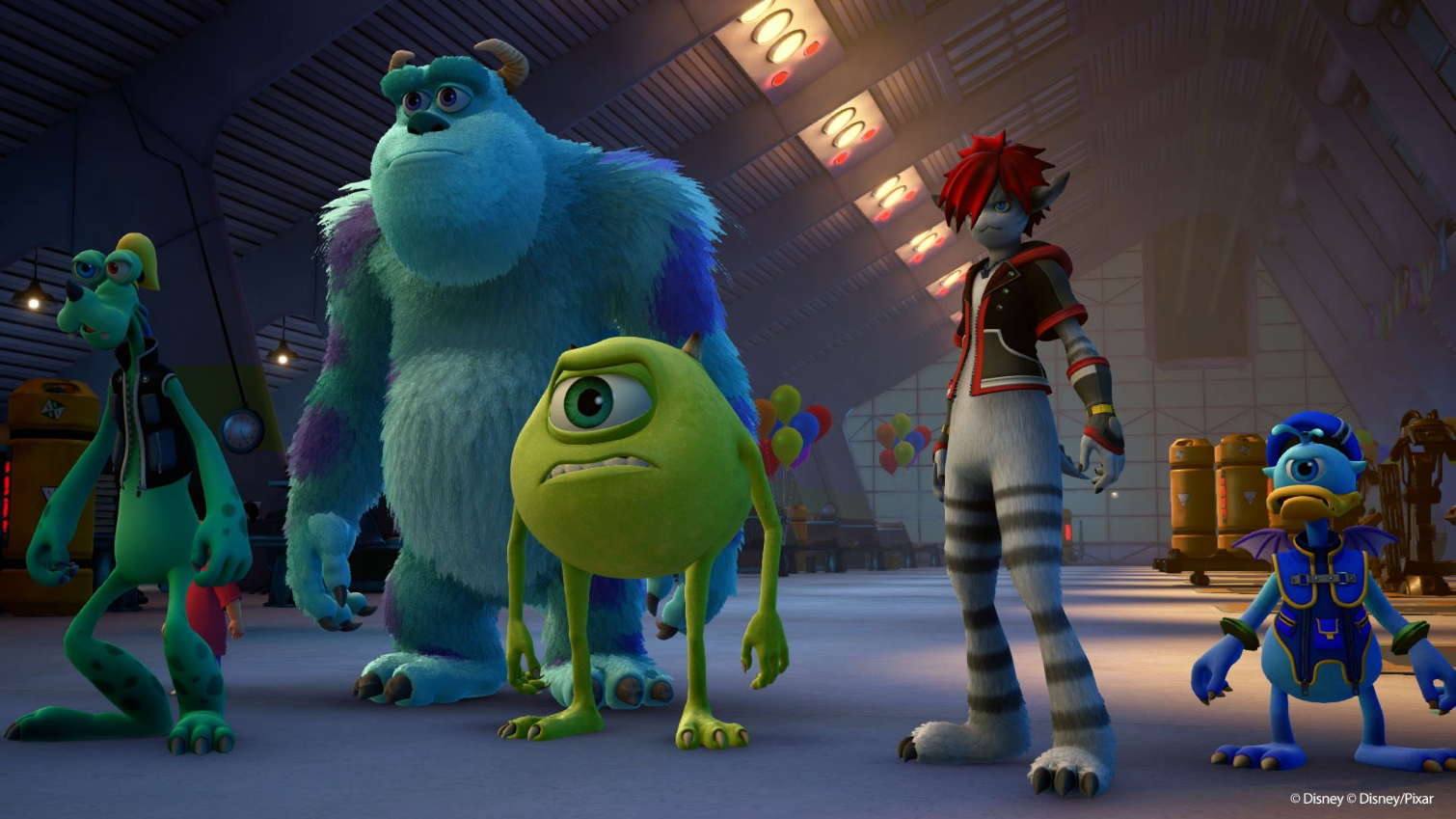Kingdom Hearts III Hands-on: Refined Combat, New Pixar Charm
Pixar films are such a natural fit for the Kingdom Hearts series, it’s truly bizarre that it took this long to see the crossover take place.
LOS ANGELES – Pixar films are generally the filet mignon to Disney’s strip steak. They’re two sides of the same cut of meat, the former is just a little bit better.
Disney movies are gorgeous, well-written, funny and memorable; Pixar movies are all of those things, too, but they’re also poignant, and sometimes even a little melancholy. If you guessed that those qualities would mesh well with a Japanese RPG, then you guessed correctly.

I had a chance to go hands-on with Kingdom Hearts III (launching this fall for PS4 and Xbox One) at its premiere press event, and a deep dive with the Toy Story level convinced me of two things. First, that Kingdom Hearts III could be a return to form for the series, eschewing the convoluted game mechanics (but not the convoluted story) that came to define its experimental handheld spinoffs. Second, that Pixar films are such a natural fit for the Kingdom Hearts series, it’s truly bizarre that it took this long to see the crossover take place.
On the off-chance you’ve never heard of Kingdom Hearts before, the series is a strange (but charming) mashup of Disney and Square Enix characters and worlds. A teenager named Sora teams up with Donald Duck and Goofy of Disney cartoon fame, and the three set off on a complicated quest to save a variety of worlds from an encroaching threat called the Heartless. The story has taken some bizarre turns over the course of 16 years — time travel, alternate dimensions, evil clones — but the central thrust is basically to explore popular Disney worlds and cross paths (and swords) with Disney and Final Fantasy heroes and villains.
Combat refinements
The Kingdom Hearts demo took almost an hour and a half, and comprised two levels: the first based on Hercules (which has supplied a level for just about every game in the series so far), and the second based on Toy Story (a first for the franchise).
Mt. Olympus, the Hercules level, was short and straightforward, mostly intended as a tutorial for some of Kingdom Hearts III’s new features. The level is almost entirely vertical, and puts Sora’s new platforming skills to the test. As he runs up a sheer cliff face, he has to dodge huge boulders thrown by an angry Rock Titan. Then, after hobbling the gargantuan beast by whacking at its feet, he can scale the titan itself in a similar way and attack its head.

Right away, I noticed that combat had two significant changes from Kingdom Hearts I and II. (The skill system is almost totally different from the handheld spinoffs, so we’ll leave those aside for the moment.) First, as Sora builds combos, he can access special skills for a limited time. Each skill is based on a Disneyland ride, complete with a Main Street Electrical Parade Color Scheme. (If you’ve never been to a Disney park, think “amusement park ride with a lot of shiny fluorescent lights.”) Whether you’re assaulting enemies with spinning teacups, a shooting gallery reticle or the Thunder Mountain roller coaster, there’s a slightly different control scheme, and you can rack up combos for an explosive finish.
The second major addition is in the form of switching keyblades on the fly. Sora has always had the ability to change his signature weapon — the world-hopping keyblade — between battles, and each keyblade has always offered different benefits (strength, magic, reach, etc.). Now, however, you can change keyblades on the fly, simply by pressing right or left on the D-pad. During the demo, I did this mostly to toy around with different special attacks, but over the course of the full game, it’s easy to see how a skilled player might learn and exploit enemy weaknesses.
You’ve got a friend in me
As much fun as the brief combat demo was, Kingdom Hearts III positively shone once I got the chance to explore a big chunk of a full level. In the Toy Story level, Sora, Donald and Goofy wind up in Andy’s playroom, only to find it under attack by the Heartless. Each one of the three heroes boasts a delightful blocky appearance, somewhere between an action figure and a Lego person.
After dispatching the Heartless through a combination of physical attacks, magic and special skills (see above), Sora and his party meet with Woody, Buzz Lightyear, Rex and Hamm. After a long (but entertaining) cutscene, Woody and Buzz join the party, and it’s off to a mall toy shop to rescue some wayward companions.

Unlike previous Kingdom Hearts games, which limited you to three party members at once (and only one level-specific party member), both Woody and Buzz join up, on top of Donald and Goofy. Managing a five-person party is not a problem; the AI is totally self-sufficient, and each party member levels up and gains new skills, just as you’d expect. You do fight bigger groups of enemies than before in order to compensate, but that’s not a problem, thanks to large, inventive battlefields and a smooth 60 fps frame rate.
In fact, having two party members join you per world opens the door for all kinds of interesting combinations. In one level we saw demoed, Flynn and Rapunzel from Tangled joined up with Sora and co.; in another, both Sully and Mike from Monsters, Inc. lent a hand. If there’s a downside to having more party members, it wasn’t readily apparent during the demo.
Whether you’re assaulting enemies with spinning teacups, a shooting gallery reticle or the Thunder Mountain roller coaster, there’s a slightly different control scheme, and you can rack up combos for an explosive finish.
The trip through the toy store quickly turned ugly, as the Heartless possessed a giant robot doll and turned it against Sora and his friends. However, Sora was able to take control of a robot of his own, demonstrating one of the Toy Story level’s unique features. Throughout the rest of the stage, Sora could occasionally hop into the pilot seat of a blue, red or purple robot. Each one had different abilities, and would help even the odds with other gigantic foes, be they robot or kaiju. (There were definitely shades of Pacific Rim in this level.)
Apparently, almost every stage in the game will have some kind of unique mechanic, like the robots in the Toy Story world. I briefly observed a meter measuring children’s laughter in a Monsters, Inc. level, and Tangled will demand novel uses for Rapunzel’s hair. At least from what I played, the robot feature didn’t overstay its welcome, and felt like a welcome distraction rather than a gimmick.
Simple and clean
What I liked best about the Toy Story level, however, had nothing to do with its gameplay. Unlike the first two Kingdom Hearts games, which were generally about reliving pivotal moments from Disney films, the Toy Story world created a totally new narrative with a cast of familiar characters. Seeing Woody, Buzz and the gang in a situation totally outside their expertise, and learning how to interact with Sora and his crew, made me eager to watch the cutscenes rather than flip through my phone until they were done.

Kingdom Hearts III has a lot to live up to, since it has to tie up not only its two direct predecessors, but also a whole mess of spinoffs. The story has arguably gotten a bit too unwieldy for its own good. But if the Toy Story level is any indication, simply charming the audience may be enough to get players invested again, and the game has charm to spare.
Credit: Square Enix
Sign up to get the BEST of Tom's Guide direct to your inbox.
Get instant access to breaking news, the hottest reviews, great deals and helpful tips.
Marshall Honorof is a senior editor for Tom's Guide, overseeing the site's coverage of gaming hardware and software. He comes from a science writing background, having studied paleomammalogy, biological anthropology, and the history of science and technology. After hours, you can find him practicing taekwondo or doing deep dives on classic sci-fi.

